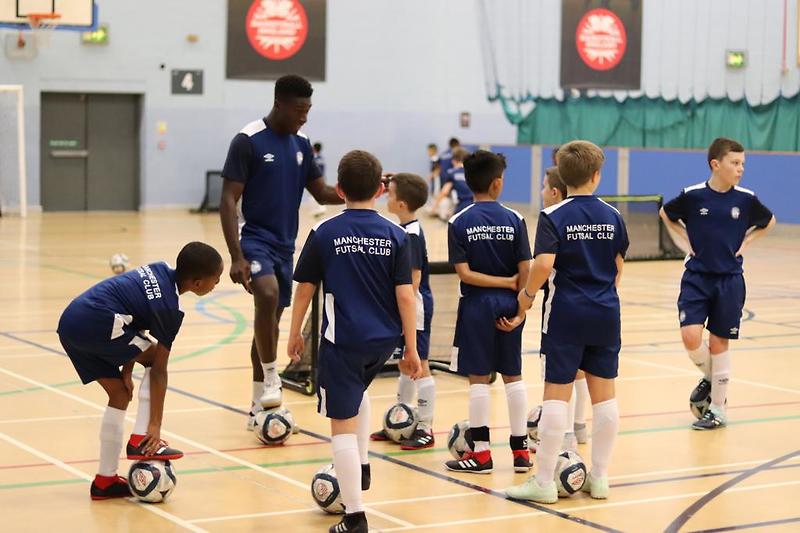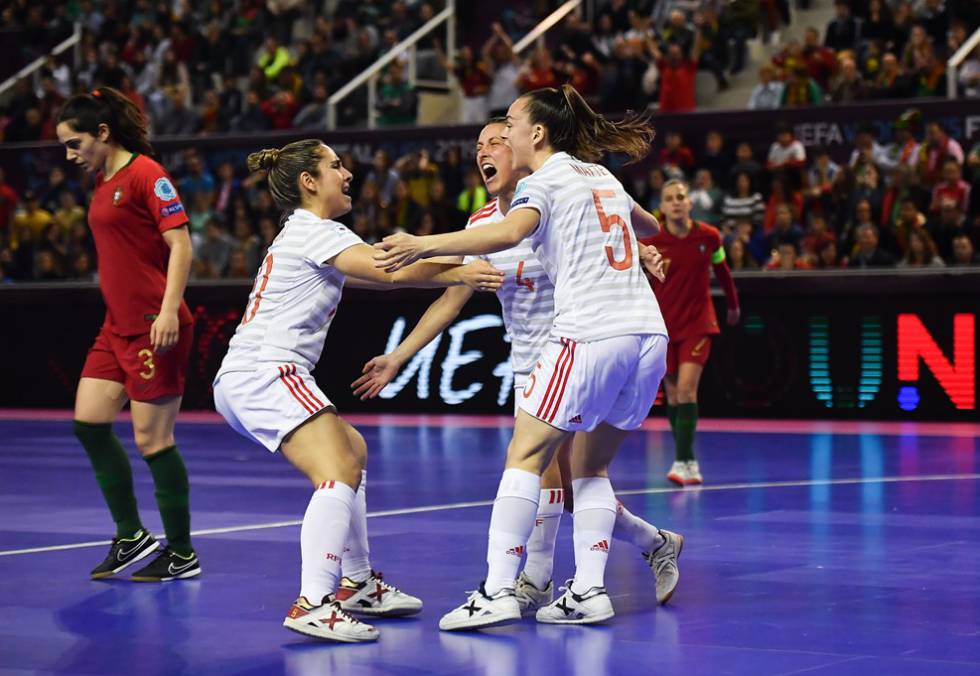Would you be interested in having the most accurate prediction possible for whether your child or player will one day have a professional career in their sport? This article will provide that after investigating what is known about the factors that influence talent development.
There are many factors that we are aware have an impact including motivation, coaching, playing opportunities, time spent practising, psychological resilience, genetics and family support to name a few. As well as these ones, there are many others that go unrecognised because we don’t realise they have an impact. For example, maybe a feature of their first school is important but is missed and never considered.
In a child’s life some elements of these factors can be controlled and are predictable but some will be highly uncontrollable and unforeseeable. An unfortunate injury or a serendipitous meeting with a coach have an element of chance and can significantly affect a child’s progression.

Young children with promising futures ahead
Even a simple question as whether a change in a factor will have a positive or negative effect is not always certain as it depends on complex contextual circumstances. More family support may enable the possibility to take advantage of opportunities. Conversely, it could make everything too effortless or add excessive pressure, causing motivation to diminish.
Having the genetics for early maturation may make them stand out enough to gain entry into an elite training programme. It can also lead to a reliance on superior physical attributes and a neglect of developing sufficient technical skills. Within the same person at one age the effect could be positive but at another time it is negative.
Determining the size of the impact from any change is also complicated. It could have anything from no consequence to huge repercussions as each factor interacts with the others and there can be cascading effects. It is like a small pebble being thrown into a pond and the ripples spread the disturbance.
Imagine a child of average ability hears a story of someone who was just like them and went on to become a superstar. This fuels their motivation to practise really hard with the belief they can become one of the best. That improvement is just enough to be accepted into a talent development programme. With access to high quality coaching, they are able develop their talent to the level needed to make it to the top.
This is a very simplified example of a ‘sliding doors’ moment named after the film of how a small inconsequential change can take someone’s life on a completely different and unpredictable path. A related concept is the butterfly effect. It is named after the theory that a flap of a butterfly’s wings can cause a tornado on the other side of the world.
The weather provides a good analogy for talent development. They are both complex systems that have many interrelated factors. This makes it practically impossible to foresee how they will evolve. I wrote about these systems in my last article on making decisions based on data.
Meteorologists observe current atmospheric conditions to very accurately predict what the weather will be tomorrow. A few days out and the accuracy dramatically drops but there is still some reliability. However, the current observations have no predictive value for whether it will be sunny or wet day in one month’s time.
This is comparable to talent development. With a 10 year old child, their ability today gives a reasonably accurate indication of how good they will be as an 11 year old and some rough idea how they’ll be at 13 years old. But, observing their talent today, offers almost no insight to where they will be at 23 years old.
Any Exceptions?
There may be a consensus it’s difficult for most children but surely for special talents, such as football’s Messi or basketball’s Michael Jordan, their future success is obvious. Watching YouTube highlights of Messi at a very young age he clearly displayed extraordinary skill. It seems his later success was inevitable.
But many videos of similar young ‘Messis’ have never been heard of again. At 17 years old, just a few years before he was picked 3rd in the NBA draft, Jordan was not included in the Top 20 High School prospects in North Carolina.
The mistake we all commit about believing we could have forseen the future for Messi or Jordan is because we only see the superstar who went on to meet expectations. We are unaware of or have forgotten the many young prodigies who failed.
The lack of understanding doesn’t end there and goes much deeper. Not only are we uncertain about the future but also about the past. Examining the background of individual elite athletes it seems intuitive why they succeeded.
Messi became unique because his growth disorder forced him to compensate with exceptional skill and then he later caught up through medical intervention. Or was it the early futsal experiences that laid the foundation for his talent? Could the key have been Argentina’s neo-liberal policies in the 1990s as Goal website suggests?
It could have been all of these things or just a part of them. Other unknown factors could have been key like the earlier example of the first school attended. Alternatively, he could have become the same player irrespective of all of these.
The fact is we just don’t know even if we don’t like to admit our ignorance. The confidence of definitive explanations based on well-reasoned narratives, given with the benefit of hindsight, is misplaced. It may seem like we know but, again, there will be many other overlooked cases who didn’t become professionals with similar genetic gifts and upbringings (nature & nurture).
The stratospheric levels of genius reached by Messi and Jordan probably required a near perfect materialisation of all the relevant factors, even those that seemed negative at the time. The circumstances falling right probably wasn’t the case for those ‘Next Messis’ or Top 20 High School Prospects in North Carolina back in 1981.
Right from the very beginning of the lives of Messi and Jordan, their future superstar status was in jeopardy from the flip of a coin. They had a 50% chance of being female and the sad truth is that a female athlete, at that time, could not have had the opportunities or impact they had. Highlighting the potential reverberating effects, would we have had Kobe Bryant or Lebron James without Jordan who they cite as their inspiration?
If predicting two youngsters who went on to be the greatest ever in the history of their respective sports is not clear, imagine how little idea we have for others.

Lebron James, like David Beckham, wore the number 23 because of his idol Jordan
The Third Unknown
So far, I’ve only covered genetic or environmental factors, as frequently discussed in nature vs nurture debates, but there might be some other unknown influencing as well.
Researchers studied a unique species of cloned crayfish that were situated in strictly controlled identical conditions. Despite controlling for genetics and environment, they showed huge differences in their size, behaviour and lifespan. The reason for this remains a mystery but one possibility is it is due to some random element.
The knowledge on talent development is captured in the words of a former American politician when he said;
“there are known knowns; there are things we know we know. We also know there are known unknowns; that is to say we know there are some things we do not know. But there are also unknown unknowns—the ones we don’t know we don’t know.”
The complexity of human performance is evident even with fully mature adults. Many player transfers at senior level under or over perform expectations even with the reference of a proven track record in a similar context. Predicting future performance, especially when we’re talking years ahead and a child yet to physically and psychologically mature, is at best exceptionally challenging, if not, impossible.
The research supports this uncertain view of talent development with studies showing the relationship between being talented at a young age and being talented as an adult is very weak. We should not be surprised if the most and least talented players in a team at 10 years old could have switched places several years later.
The only relevant research we have is at the aggregate level, suggesting certain aspects are correlated to becoming an elite athlete such as being a younger sibling or experiencing a setback. But this is useless information for a specific individual. It’s the same as knowing out of all the youth players how many approximately will go to be professionals but that doesn’t help us identify which ones will.
Talent Development In The Shadows
To summarise, we don’t have a clear understanding on all the factors that impact talent development, whether the effects are positive or negative, how these factors will materialise and the size of the effect. Add in that hindsight provides little help in learning from historical cases and that there is potentially some randomness in the process.
This leads to the conclusion that there is just too little understanding and too much uncertainty about what impacts talent development to claim, with any credibility at least, it is possible to forecast who will go on to reach the top level.

Only a few make it to the top
Accepting that we have a lot less control on shaping our own destinies than motivational quotes on belief and effort would have us believe, and being incapable of predicting what will happen, leaves a feeling of dissatisfaction and helplessness. But, despite all I have written so far, there is still a way to make a prediction on an individual’s future.
The amount of players that can reach the top level is limited as it is not about reaching a certain standard but being the best of what there is. For example, taking football where data are available, there are 1.5 million English youth players involved in organised competitions. In the Premier League there are approximately 180 English players.
Each sport will have different ratios with the number of youth participants usually correlating with the number of professional career opportunities. The underlying point is that only a select few can ever make it. So, without needing to know anything about the individual child, it is possible to make the most accurate forecast possible.
Regardless of the child’s current talent and assumed prospects, the chance they reach the highest level is very small.
Benefits of Sport
But this is nothing to be too discouraged about as sport provides many guaranteed benefits that are more significant than the very small prospects of a playing career. It just requires that what is provided reflects this imbalance.

Sport offers children much more than prospects of professional careers
I fear childhood, in some cases, is becoming professionalised and rigorously programmed by adults. Opportunities to experiment and explore different interests are being displaced by structured activities with the focus to maximise future career opportunities. Creative potential and enjoyment is at risk from having to abide by the established path to success.
It is sometimes reflected in how futsal is presented to children who play football. They are given the impression of another compulsory task that must be accomplished rather than an activity to just enjoy and lose yourself in. That approach is misguided in my opinion. Much better and more effective is to excite them about this wonderful sport without any mention of the benefits for their football development. That will naturally occur regardless.
The attraction of a professional career is to extend the enjoyment of playing as a child into adulthood, which, in any case, it will never capture to the full extent. I started out playing as a kid with my friends and later was fortunate enough to play professionally and for my country. My senior career has been hugely fulfilling and lots of fun but, if I could choose only one of those experiences, I would opt for the former in the blink of an eye.
Whilst having a career at the top is challenging and uncertain for any child, much more achievable and rewarding is building a lifelong passion and involvement in the game as players, coaches, referees and other roles. Rather than being reserved for the privileged few, this success is available to the majority as long as that is the foundation for what we provide for children.
What’s your opinion? Something to add? I’d love to hear your thoughts in the comments.
CoachingFutsal.com has relaunched & provides a complete solution for coaches. The platform, with free basic membership, offers an exercise, training session and concepts database from world class coaches as well as the ability to create your own. You can add exercises into your training sessions and add training sessions or other events to your calendar (can link with Google’s). Share your exercises, training sessions and calendar with groups (e.g. players, coaches, parents etc.). I highly recommend you go there now to register!

Excellent article, as ever Doug.
There may be some useful predictive tool out there.
Forsman and co-authors (2016) describe a study in which they performed standardised testing of the technical, tactical, physical, and psychological characteristics of a group of male footballers at the age of 15 in in an attempt to predict whether they would play at an elite (Finnish Division 1 or higher) or sub-elite (Finnish Division 2 or lower) level at the age of 19. The players at age 15 were selected from the 12 clubs playing at the highest level in Finland. The study found that the performance level at age 19 was clearly associated with the technical skills of passing and crossing, as well as agility and motivation levels at age 15. The authors had an (unbelievably high?) 86% success rate in correctly classifying players as elite or sub-elite based upon these diagnostic tests, so only just over 1 in 10 players would be wrongly classified at age 15 as elite when they were in fact sub-elite, and vice versa. It is likely that the diagnostic success rate will be less than 86% if players younger than 15 are tested, but these results provide strong support for the idea that some relatively straightforward standard tests could be very helpful in predicting success.
Forsman H, Blomqvist M, Davids K, Liukkonen J, Konttinen N. 2016. Identifying technical, physiological, tactical and psychological characteristics that contribute to career progression in soccer. International Journal of Sports Science and Coaching 11:505-513.
Hi Mark. Thank you for making me aware of that study which I had not read. I have now and I actually think, if anything, it supports the arguments I was making (maybe it’s confirmation bias!!). There is no good predictive tool out there and I am sure there never will be.
Firstly, it is only predicting for 19 years old at 15 years old. This fits with the weather analogy, it is possible to predict a few years ahead with some accuracy, and more precision will be possible as players approach fully maturity, but long-term we can’t forecast with any accuracy.
Linked to above, this study does not identify players who will have professional careers which was the subject of the post, although 19-year old players will have professional contracts. They have still not established themselves. For reference, a stat from the PFA highlights that in England players that get on to the elite scholarship programme at 16 (U would presume that’s for at least 2 years), five out of six are not playing professional football at 21. Obviously, at 19 years old the numbers won’t be as high, but I would still expect a significant amount are not professionals a few years later. This study would be much more interesting, and relevant to the topic the post was covering, if it evaluated players level at something like 23. The authors recognise this by writing;
“In this study, players were also followed up only to 19 years of age, so there is also a need to follow these players further in order to observe which of them would eventually reach elite status (e.g. international level) and professional status (e.g. national level) in their careers.”
It supports the argument that we don’t understand very much. They said that the tests explained 43% of the variance of performance level. Even if we consider this robust (which as you’ll see from the following I don’t) that still leaves 57% unexplained. More than half the reason for the level a player is at 19 is not known at 15!
Below I have written the reason why I don’t think we can rely on the results of this study using my basic understanding. Happy to hear any counterpoints or mistakes I have committed.
1) The tests aimed to calculate who would be in elite and sub-elite with 23 participants being in the former at 19 years old. The model selected the right group with 86% accuracy. I doubt how valuable this is considering a model that predicted 100% would be in the sub-elite group, would have achieved 80% accuracy (23 wrong out of 114 total participants).
2) Related to the point above. I think the sample size is too small to give any reliable indication and to remove enough randomness. Also, I don’t understand why they removed 28 players from the study who had dropped out at age 19. Surely these should be considered sub-elite (playing in division 2 or lower)?
3) Humans are still maturing until around 23 years old. This study stated the players who ended up in the elite group were “significantly heavier” at 15 years old when the tests were carried out. Could this be an indication that they were the ones who matured early and the others had yet to catch up 4 years later? The authors acknowledge this to an extent in the discussion.
4) In the post previous to this one (How The Case For Data-Driven Decision Making Has Been Overstated) I mentioned the NFL draft where players are a minimum of 20 years old and are assessed through “extensive testing that incorporate speed, strength, power, agility, various technical skills, psychometric ability, physical measurements, injury evaluations and cognitive capacity.” Many studies have investigated whether there is correlation with subsequent performance in NFL and found there is very little. I think this demonstrates that even into their 20s these types of tests have little value.
5) They tried 14 separate attribute tests to see if there is any correlations and found 4 had to a significant amount with statistical significance (p value ≤ 0.05). Due to the high number of variables tested there is a reasonable probability of the correlation being completely down to chance.
6) If the findings were reliable, there is still restricted usefulness for predicting the future of an individual player. Some players who got low scores made it to the elite and vice versa. It can’t tell us which ones will get low scores and become elite and which ones get high scores and don’t.
7) It says passing and centring is linked with being in the elite group. The passing and centring test is scored on passing a ball and it stopping in a grid. This has very little link to the skill of passing in the actual game and even less with overall playing ability so any causal link can be discounted immediately.
8) The study produces results that just don’t seem logical. It says being in top group for agility you have 10 times more chance of being in the elite group than someone in the bottom group for agility. And if you’re in the middle group you have basically the same amount of chance as someone in the bottom group. Yet the middle point of the high group agility score is 6.41 seconds, the middle group is 6.73 and low group is 7.19. Such a small difference in agility can not be realistically expected to link to such a different probability of being elite or sub-elite. In the other two significant factors the probability is again 10 times or 1000% more likely. This is too large to be believable.
9) We only look at 15 year olds who were in the top 12 clubs at that time. What about the 19 year olds that were in the elite level that weren’t playing in those top 12 clubs at 15 and so not included in the study? Therefore, what their scores at 15 years old would have been is not considered. Maybe they had low scores and that’s why there weren’t in the top 12 clubs at 15 years old. We just don’t know. Again, the impact of this would likely be more important if their playing level was assessed at older than 19.
There needs to be more studies done with more appropriate methods to identify whether there is any causal links that can be found by young players and professional players. If there is any causal links found by looking at historical data it would then be good to see this used to try to predict who will become a professional player before they do (without informing anyone as then may affect how they are treated). In conclusion, I don’t think we can take anything from this study.
Just to add I think the best predictor will always be a human even if it will never be so accurate. I’m confident it will always do better than tests or data analysis even if neither will do that well.
There’s a good story at the beginning of Rasmus Ankerson’s book The Gold Mine. His academy signed a player who they didn’t want but there were no other options. A few years later when the player was 18 years old he was signed by Palermo for £3.3 million. He has since gone on to play for Roma, AC Milan and Sevilla among other clubs and made nearly 100 appearences for Denmark. 6 months after they signed him in the academy they did an exercise where each coach and the academy director picked 5 out of the 16 players who they thought were most likely to be successful. Out of the 8 of them, not one picked that name; Simon Kjaer. I don’t think those coaches made an error of judgement at that time. It is just that talent development is very difficult to predict.